- Animal record book
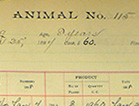
- Études sur la Bière (Studies on Beer)
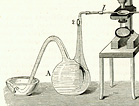
- How did they ferment beer?
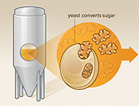
- How did they make diphtheria antitoxin?
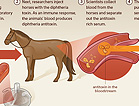
- How did they make insulin from recombinant DNA?
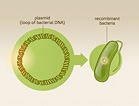
- How did they make penicillin?
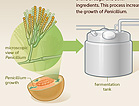
- Insulin sales kit

- Intubation kit
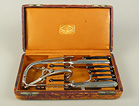
EXPLORE
Select one of the topics from above.
Animal record book,
New York City Department of Health, 1897–1898Courtesy National Museum of American History
In the 1890s the New York City Department of Health kept a logbook of the horses used for antitoxin production. The entries for each animal provide a record of toxin injections and bleedings, the amount of blood collected and serum produced, and the animal’s death.
Animal No. 7 received 8 toxin injections and was bled for 30,350 c.c. (8.02 gallon) of blood during Novermber 1897&–December 1898.
Animal No. 83 received 11 toxin injections and produced 50,190 c.c. (13.25 gallon) of blood during October 1897&–May 1899.
Animal No. 96 received 6 toxin injections and was bled to produce 26,430 c.c. (6.98 gallon) of blood during October 1897&–January 1899. Among the collected blood, 265 c.c. was noted for use in toxin injections.
Animal No. 111 received 7 toxin injections and was bled to produce 18,480 c.c. (4.88 gallon) of blood during November 1897&–July 1898. The record contains three entries under “Destroyed” column.
Animal No. 115 received 12 toxin injections and produced 39,100 c.c. (10.33 gallon) of blood during December 1897&–December 1898. Two “distroyed” entries are noted as “moldy” and “broken.”
Études sur la Bière (Studies on Beer)
by Louis Pasteur, 1876Courtesy National Library of Medicine
Pasteur published the results of his study of beer-making as Études sur la Bière in 1876. This illustration from his book demonstrates a method for examining the yeast in beer without exposing the sample to contamination from other microorganisms. His publication included plans for a fermentation tank that would prevent air-borne bacteria from entering and spoiling the brew.
How did they ferment beer?
Courtesy Link Studio
How did they make diphtheria antitoxin?
Courtesy Link Studio
How did they make insulin from recombinant DNA?
Courtesy Link Studio
How did they make penicillin?
Courtesy Link Studio
Insulin sales kit,
Eli Lilly and Company, 1940sCourtesy National Museum of American History
In the early 1920s, Canadian researchers isolated insulin from the pancreas glands of animals and successfully treated children with diabetes. They partnered with the American company Eli Lilly to mass produce this life-saving substance. This sales kit illustrates the step-by-step process for manufacturing insulin.
Intubation kit,
ca. 1898Courtesy National Museum of American History
Diphtheria is characterized by a membrane that grows in the throat causing the infected child to struggle for breath. To prevent suffocation, doctors performed tracheotomies and intubation, surgical methods for restoring a breathing passage.
This intubation kit includes a set of seven tubes, sized for children up to age twelve, along with the tools used for inserting and extracting the tubes from the throat.

